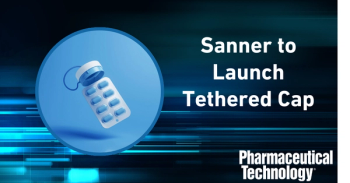
- Pharmaceutical Technology-09-02-2017
- Volume 41
- Issue 9
From Reactive to Proactive Supply Chain Protection
It’s time to stop talking about “anticounterfeiting,” and move to integrated, collaborative supply chain security, experts say.
As trade in counterfeit pharmaceuticals continues to increase, security and enforcement efforts are barely making a dent in a complex, multinational industry. “The trade in illicit or falsified medicines is by far the most sophisticated organized crime that any of us have ever seen, with tentacles that reach all over the world,” says David McKelvey, director of TM Eye, a detective agency based in the United Kingdom whose work recently led to the arrest, in India, of Paresh Patel, the head of a major counterfeiting ring (see
“The global scale of this type of crime is extremely difficult to investigate or tackle,” he says. One large counterfeiting ring that TM Eye is now tracking has more than 45,000 affiliate websites running all over the world, using online hosting in Canada and the United States, says McKelvey.
Each of its fulfillment houses, based in India but run from Romania, sends out between 300 and 500 shipments of fake medicines each day, he says, using printing facilities in India, sourcing API from China, and receiving payment through “front” clothing companies in Singapore connected to bank accounts in Panama.
Untangling this type of web is beyond the power of local or national law enforcement, and a major challenge to international groups as well, which is one reason why counterfeiting is increasing and the true size of the market remains a mystery, McKelvey says.
The rise of the homegrown lab
But if large global crime networks are at work, fake pharmaceuticals are also becoming a “local” problem. “From buying pill presses to preparing batches of illicit opioids in garages and living rooms, we’re seeing an emergence of homegrown labs,” says Bob Miglani, chief of business development with Applied DNA Sciences, which sells taggants designed to prevent counterfeiting. “Today it’s opioids, but tomorrow it could be mom’s diabetes medicine. Pharmaceutical companies, the federal government, states, and the entire supply chain must work together to increase the security of the pharmaceutical supply,” he says.
“The ease by which counterfeiters can procure component packaging and ingredients, combined with their use of more sophisticated production and distribution methods, present a serious and ongoing challenge,” says Rich Kaeser, vice president of brand protection at Johnson & Johnson (J&J).
Pharmaceutical companies have been approaching this problem by layering different approaches on top of each other (see
Brand owners have become much more sophisticated about managing the security of their products, he notes, but so have counterfeiters. Nevertheless, progress is being made, Mansfield says, and some of these efforts hinge on collaboration.
Need for forensic testing
“The notion of anticounterfeit strategies feels outdated,” says Miglani, “and the current model is reactive, based on tests done after a suspect product is found,” he says. “There is a need for more advanced forensics, to analyze the chemical makeup of suspicious products,” says Tom Kubic, president and CEO of the Pharmaceutical Security Institute (PSI). The idea would be to look at competing products advertised online, order samples, and test them to find out what’s in them. Sanofi set up a dedicated lab to do this in Tours, France, in 2010, and Pfizer has this capability as well, Kubic notes.
Testing services could also be outsourced. Applied DNA Solutions plans to introduce these capabilities in the near future. “Customers would take samples from supply chains in various countries and have them tested for authenticity, with results used to develop a ‘heat map’ to display the relative strength of various supply chains and regions, much as the US Centers for Disease Control do when they map and track the flu virus each winter,” says Miglani.
These forensics efforts would, ideally, involve enforcement and regulatory authorities, as well as other manufacturers--perhaps, through industry groups such as Rx-360. Advanced analytics would help drive these efforts, says Steve Tallant, director of product marketing at Systech, which offers expertise in serialization, traceability, and brand protection through its Unisecure platform.
Manufacturers would collect data on the chemistry, or on spectroscopic or other signatures generated by counterfeit drugs, labels, and packaging. Working together, companies and law-enforcement agencies could compare recently seized materials with similar counterfeits seized in the past, and note patterns, says Tallant.
For now, industry is moving closer to this goal with collaborative programs. A number of pharmaceutical companies are using market-monitoring strategies, including J&J, which set up an enterprise-level Office of Brand Protection in 2010 to focus on best practices. J&J is working with Rx-360 and partnering with brand-protection technology suppliers and others focused on product security and advanced analytics capabilities, says Kaeser.
Kaeser and Tony Strange, director of global brand protection for J&J’s biopharma subsidiary Janssen Pharmaceuticals, both participated in the University of Tennessee Health Science Center’s first Pharmaceutical Safety Conference in June 2017. They are working closely with Michigan State University’s Center for Anticounterfeiting and Product Protection, and, in early October 2017, will be sponsoring the Brand Protection Strategy Summit.
At this point, global law enforcement efforts are focused on anti-terrorist activities, and some agencies have not yet been convinced that drug counterfeiting is a serious crime, says Kubic.
Efforts in the past have shown what might be possible if enforcement agencies were actively engaged. Kubic recalls Operation Pangea in 2015, a global effort involving Interpol and 115 countries, which led to the seizure of $81 million in counterfeit pharmaceuticals and shut down 2400 websites (1). Within Canada alone, Kubic says, in eight days, 3800 packages were inspected and 90% of them seized. Then everything went back to status quo after initial efforts officially ended.
FDA increases support
FDA Commissioner Scott Gottlieb has pledged to step up enforcement, by doubling the number of agents in the agency’s Office of Criminal Investigations (OCI) (2). In addition, FDA has established a program designed to make pharma professionals aware of best practices, and to help them train employees. The program will involve cooperation from the US Pharmacopeial Convention and the University of Michigan, and disseminate best practices developed by J&J and other Rx-360 members (3).
In the US, illegal product diversion and counterfeiting increased in 2016, with 3147 products counterfeited or diverted, up by 5% from 2015, and by 51% from 2011’s figure. Theft and diversion were up 14% from the previous year, says Kubic, summarizing PSI’s most recent data. “These medications are genuine, but are getting into the country illegally, and 2016 is the first year that we saw more diversions than counterfeiting,” says Kubic.
Globally, arrests for pharmaceutical counterfeiting and diversion were down by 9% in 2016, says Kubic, although arrests in China increased by 24%, with 94 arrests taking place in in 2016 (compared with 19 in the US). Arrests fell by 35% in India.
In 2016, injectable formulations made up 18% of incidents in which a specific formulation type could be identified, compared to 13% in 2015, says Kubic. Also evident is a move from fakes that include no active ingredient at all to those using locally produced substandard generics, says McKelvey.
References
1. “
2. S. Gottlieb, “
3. I. Bernstein, “
Article Details
Pharmaceutical Technology
Vol. 41, No. 9
September 2017
Pages: 18-22
Citation
When referring to this article, please cite it as A. Shanley, “From Reactive to Proactive Supply Chain Protection,” Pharmaceutical Technology 41 (9) 2017.
Articles in this issue
over 8 years ago
The Role of the Quality Unitover 8 years ago
Using Simulation to Address Capacity Limitationsover 8 years ago
Scaling Up a Continuous Granulation Processover 8 years ago
The Human Cost of Congressional Stalematesover 8 years ago
Expediting the Discovery and Development of Drugsover 8 years ago
Stepping Up the Pace of Drug Stability Studiesover 8 years ago
Top Trends in Biopharmaceutical Manufacturing, 2017over 8 years ago
A QbD-Based Approach to Drug Packaging and Deliveryover 8 years ago
Targeting the LungsNewsletter
Get the essential updates shaping the future of pharma manufacturing and compliance—subscribe today to Pharmaceutical Technology and never miss a breakthrough.





